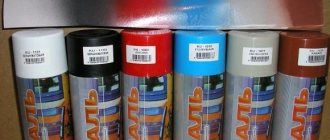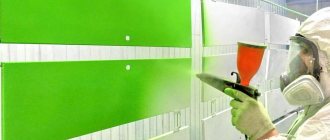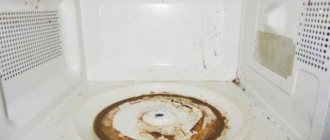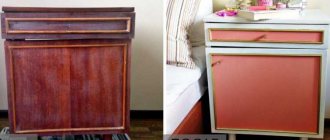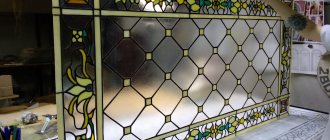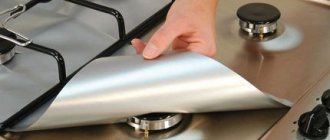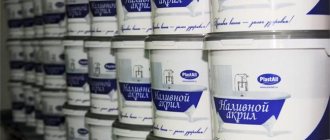Features of working with plastic
In everyday life, the term “plastic” means products made from the following materials:
- polypropylene;
- plastics;
- polystyrene;
- polycarbonate.
But not all plastics are suitable for painting, since it is often much easier to initially select the material of the desired color. Such materials include polystyrene, polycarbonate and polyethylene - they are not painted.
Before you start painting the plastic, you need to remove all dirt from the surface and wipe it dry. When painting, the following nuances should be taken into account:
- The surface to be treated must first be thoroughly cleaned of dirt, grease, oil, bitumen and other stains. To do this, you can use a solvent.
- The plastic is also treated with an antistatic liquid to relieve stress generated by friction. This is necessary so that when painting, lint, hair and dust do not attach to the product.
- If an old product is to be painted, then to correct defects, the surface is initially puttied with a special putty for plastic, which is more elastic.
- Protrusions and irregularities formed on the putty must be sanded with sandpaper with moisture-resistant properties. Such an abrasive is necessary, because grouting occurs using water to smooth out all cracks and crevices.
Soft sandpaper for finishing Source livemaster.ru
- After drying, the product is degreased again.
- Three thin layers of primer are applied to degreased plastic for improved adhesion. The primer can be any: any color, two-component or multi-component.
- After the primer has dried, the surface is treated with sandpaper with an abrasiveness of 400-500.
- If you are going to paint the plastic yourself, you need to add a plasticizer to it and apply 2-3 layers using a spray gun. Before applying a new layer, you need to wait for the previous one to dry.
- Half an hour after applying the last layer, the surface is covered with varnish or metallic paint.
- To bring the product's appearance to perfection, a wax polishing paste is applied to it, which covers minor imperfections.
See also: Catalog of companies that specialize in finishing materials.
How to prepare paints
Manufacturers produce hundreds of different variations of paints of different colors and textures that can be used to cover almost any plastic product. Plastic can be painted using:
- Elastic enamel with a large amount of plasticizer - ideal for flexible and soft plastic products;
- Regular acrylic enamel , which is suitable for hard and dense materials.
The color of the paint can be manually formed on the palette Source repaireasily.ru
According to the form of release, paint on plastic can be:
- In cans . It is easy to operate and can be used by anyone who has not painted a product before. To carry out the procedure correctly, it will be enough to follow the instructions that come with most paints. Also for spray paints, you can choose a tip that regulates the flow of paint and the uniformity of coverage.
- In banks . A beginner is unlikely to be able to cope with such paint. This is explained by the complexity of application, as well as the need to completely isolate the room from any lint and dust, including those flying in the air. This is quite difficult to do.
- In the form of “liquid plastic” . This type of paint is universal. It helps create a uniform polymer layer that reliably protects the surface from negative external influences, and also gives the surface a beautiful appearance. As a rule, liquid plastic is a one-component composition. It is produced from organic solvents, which include resins, plasticizers, dyes to obtain the required shade and optional additives.
You can’t do without can paint if you need to paint a small area or small parts.
Can paint can also be used to paint plastic Source ksportal.ru
Types of paints
Water-based composition
Plastic can be painted with water-based polyurethane-acrylic paints. Simpler - water-based paint and varnish material. Even simpler - acrylic enamel on water.
Most often, such paints are two-component:
- The base part is the paint itself.
- Hardener is a universal solution specifically for acrylic water-based enamels, giving them chemical and mechanical resistance. The universal hardener itself is colorless and odorless.
Under the influence of this polymer, the paint takes on the properties of a good varnish coating: decorativeness, uniformity of the layer, resistance to atmospheric and mechanical influences, fits perfectly, and is resistant to fading and ultraviolet rays.
These are compositions of special strength, which use polyurethane additives + acrylates.
Acrylic paints for plastic, combining the functions of a primer and a dye, do not require special preliminary preparation of the painting surface itself. Of course, if it is not very dirty. Painting plastic parts and painting even large areas of plastic that are subject to strong mechanical stress with these types of paint is the right decision.
Matte soft-touch paint
Items that we use frequently should be pleasant to hold in our hands. They should please not only the eye, but also the hand. What paint should I use to paint the plastic of a mobile phone or computer mouse, as well as lighters and pens, a flash card and furniture fittings? How can you paint eyeglass cases and cosmetics boxes, hand tools and children's toys? What plastic paint will decorate a modest flashlight or high-precision binoculars? – Matte soft-touch paint!
This matte and soft-to-touch material is not only pleasant, it also perfectly absorbs light or sound, and is suitable for making a product decorative. The most popular color of two-component paint with a matte soft-touch shade is black, however, the manufacturer can offer other, brighter and more contrasting colors.
In the video: painting plastic.
Soft-touch paint for plastic can be used not only for plastic, but it must be taken into account that when painting other surfaces (other substrates) with it, you will have to look for other primers corresponding to the material being painted.
Do not prime any surface to be painted with solutions containing copper sulfate! CuSO4·5H2O forms chemical compounds with acrylic paints that significantly worsen the properties of water-based acrylic enamels, and also deprives them of adhesion (adhesion of surfaces of dissimilar bodies). But thanks to the high adhesion, painting plastic with these paints is so valuable!
Very often, soft-touch is used when decorating a car and its interior parts, because... It not only has exceptional wear resistance, but also makes it easy to paint vertical surfaces, at the same time smoothing out visually sharp corners.
Water-based polyurethane-acrylic paints for PVC
You can paint the plastic with water-based polyurethane-acrylic paints. Conventional, without giving a matte effect, these compositions are used for painting large surfaces. What can be painted? – Siding and sandwich panels, rigid PVC and building profiles, metal-plastic doors and window frames.
These are quality paints! They form a water-repellent dense film, wear-resistant and “not prone” to stickiness, giving the products additional hardness and maintaining their elasticity and elasticity. The indicators of resistance to defect formation and anti-blocking (technological resistance to surfaces adhesion to each other after application and drying without loss of original decorative effect) of PVC paints are simply excellent.
Service life is guaranteed to be at least 7 years, but in reality it is much longer. In essence, PVC is colorless, because it's just a thermoplastic polymer of vinyl chloride - a plastic that needs to be given bright, rich colors to make it "pleasant to the eye."
It is for this “joy” that plastic painting compositions are used, consisting of two components (like soft-touch):
- Base acrylic paint of the desired color - paste.
- A thick, milky white liquid – a hardener – with properties that can give paint a soft, pastel tint or, conversely, color painted PVC (and with them) with all the colors of the rainbow.
If texture additives are added to the base paste, then the plastic products themselves will acquire various texture effects (wood, rough plaster, fabric, etc.).
Aerosol paints for plastic
Don’t think that painting plastics from spray cans is only available to decorating gurus. Ease of application, a large selection of colors, and the absence of hassle with mixing and diluting make aerosol paints and varnishes very affordable means. They are suitable even for a person who is thinking for the first time about such a highly artistic task as repainting or updating plastic with his own hands.
Polyurethane-acrylic enamel in aerosol cans is produced in 2 types:
- The already well-known soft-touch is a structural paint that, when dry, gives a slightly rough, “soft” surface that allows you to hide minor flaws in the painted surface. It is also perfect for creating original, cozy “home” decor.
- Monad enamels designed to paint PVC allow you to paint plastic in a glossy, bright color that reflects the sun's rays.
This assortment allows you to choose the right aerosol that is needed for one or another type of plastic.
The advantages of the aerosol are obvious:
- the balloon does not require the use of additional molar instruments (brushes, rollers, etc.);
- convenient and easy to use;
- the paint lays down in an even, smooth layer on any surface to be painted;
- the structure of the paint allows you to imitate any desired surface (metal, wood, leather, fabric, mirror);
- colors are not subject to fading for a long time;
- unspent remains can be stored in the cylinder for a long time;
- economical for wide areas of spraying;
- when repainting the product, it easily covers the previous layer.
So that not only you, but also those who will “accept” your work will enjoy painting, we paint plastic according to all the rules. We'll look at how to properly paint plastic using an aerosol below.
How does plastic painting work?
There is nothing difficult about how to paint plastic so that the paint does not peel off. To do this, you need to follow step-by-step technology:
- Clean the plastic from dirt using a sponge, brush and soap solution. This step should not be neglected, as dust and dirt interfere with the uniform coating of the paint and the product will have to be processed again. Serious damage, erosion or mold can be removed using bleach. Then you need to wait until it dries completely.
- After this, the plastic is degreased, the solution is washed off and completely dries again.
- If there is a need for a “porous effect”, the plastic is sanded using sandpaper with fine abrasive particles or using a sanding machine.
- Use construction tape to cover those areas that do not need to be painted. It must be peeled off immediately, without waiting for it to dry.
- After applying the tape, you can begin painting the product and applying varnish after drying.
Painting plastic with a brush
Painting plastic with can paint using a brush differs in technology. This method has its own nuances. The most important thing is the long drying time of the material. Therefore, there is a need to isolate the surface being treated from any source of dust, lint and hair. Doing this at home is almost impossible. Therefore, this method should be preferred only if there is no need for perfect coverage and detail. The entire process of preparing the material for further processing is no different from the technology for aerosol paint.
The main disadvantage of can paint is the long drying time Source zip.ua
Polymer paints
They perform two functions at once - priming and painting (accordingly, they do not require preliminary priming of the surface). They are characterized by a high degree of adhesion, resistance to mechanical stress, precipitation and UV rays, and dry quickly. They are both waterproof and water permeable.
As a result of painting, a glossy surface is created, therefore, there is no need to additionally coat the product with a layer of varnish. Among the leaders in manufacturing are the following companies: ABRO, RUST-OLEUM.
How to choose the right paint
Before purchasing paint, you need to know the basic requirements for this composition:
- Purpose . In most cases, the manufacturer indicates on the packaging what type of plastic a particular paint is suitable for;
- Aesthetics . Aesthetics refers to the buyer’s idea of the final result and appearance of the product;
- Moisture resistance . Acrylic-based paints designed specifically for plastic have excellent water resistance. After drying, an invisible protective layer forms on their surface. But if the object will be operated in conditions with high humidity, additional waterproof polyurethane additives are used.
- Spreadability and hiding power . Such indicators will indicate the thickness and uniformity of the coating after its application and drying;
- Adhesion is the level of adhesion of the solution to the working surface. Most paints on the market have excellent adhesion properties.
Structural paints for plastic
Their main purpose is to create a surface with a special rough decorative effect (fine or coarse grain). This coating is ideal for those surfaces that are regularly exposed to mechanical stress, because uneven paint will hide all defects.
Structural paints from manufacturing companies received the greatest number of good reviews: Popular brands: KUDO, APP, NOVOL, BODY, U-POL, Maston.
Briefly about the main thing
There are two options for painting plastic - aerosols or paints in cans. The first option is suitable for large surfaces that require a uniform and reliable coating without flaws. This paint is easy to use and does not require special skill in application. The second option is suitable for applying with a brush to the surface of PVC products or small parts that are difficult to treat with an aerosol. Before starting the procedure, the surface must be treated with a degreaser, primer and sandpaper.
Ratings 0
Monad colors
Enamel paints, which are mainly used for coating PVC (polyvinyl chloride). The main advantage is resistance to ultraviolet radiation and good adhesion to the base. Manufactured on the basis of a modified alkyd polyvinyl chloride resin.
They require mandatory application of a primer before painting. They create an even, smooth surface and dry fairly quickly. For painting you will not need special skills or additional equipment, since the paints are easy to use (applied in several thin layers).
Popular manufacturers: KUDO, TYTAN, ŚNIEŻKA, GAMMA-PAINT, Orion.

